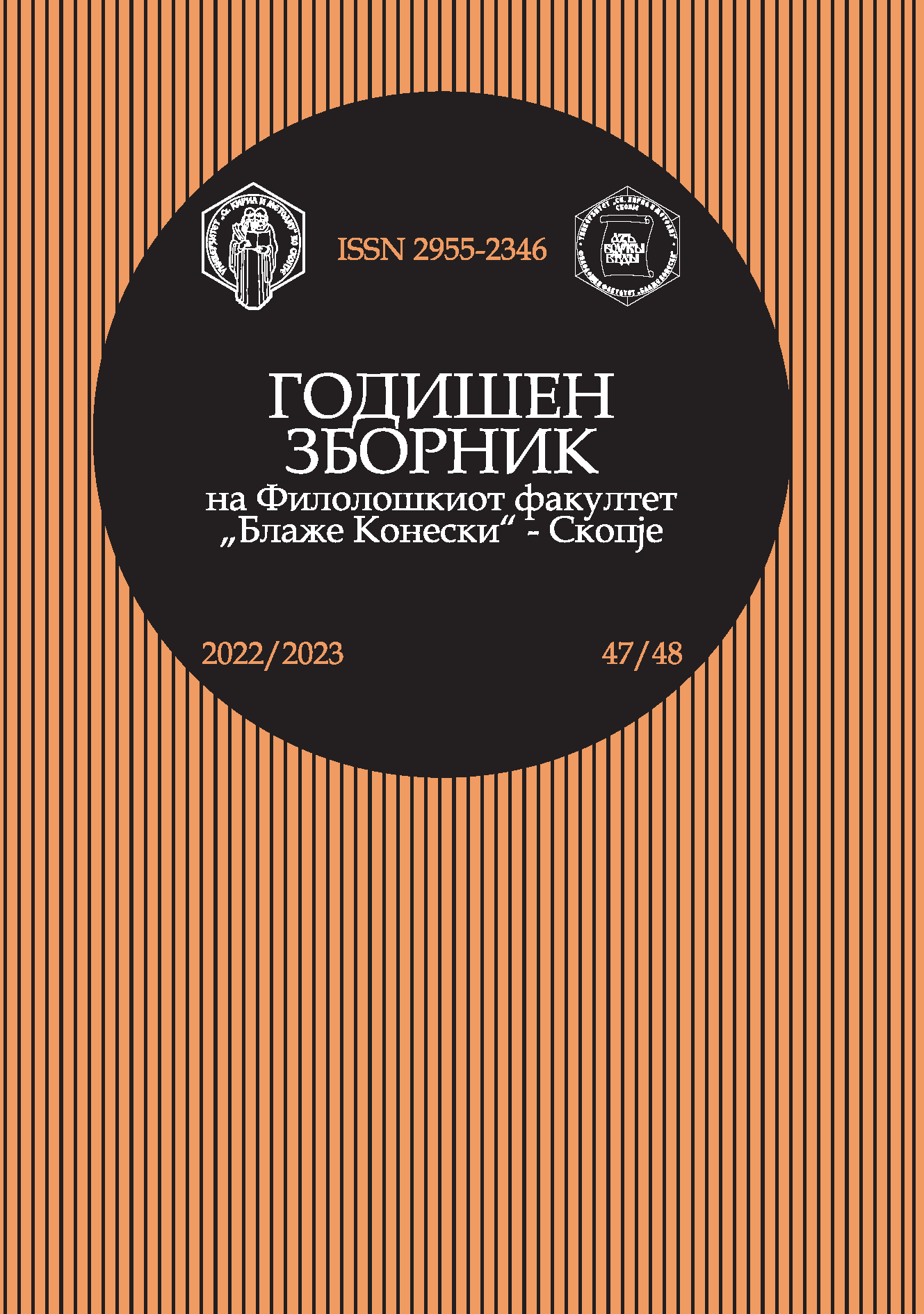Времето и просторот во романот Домашна змија од Аријан Лека
ДОИ:
https://doi.org/10.37834/GZF2247-48535fКлучни зборови:
Аријан Лека, време, простор, изолација, мореАпстракт
“I do not define time, space, place and motion, as being well known to all.”
- Isaac Newton in Scholium to the Principia, 1687
As a narrative structure, as a discourse that neatly animates in itself a spectrum of feelings, dreams, hopes, faith, revolt, from which it weaves a metaphor for the existence of a parallel world, the approach to a world so close and far away at the same time, is one of the most special works in contemporary Albanian and, in general, Balkan literature.
The two parallel streams in the portraying of a world that is shown and that which is implied, which is intended, to connect a parable of known and unknown codes that communicate with each other. Arian Leka invents a different world, transformed, disintegrated, maybe even in a way deformed to specify the ironic and grotesque expressiveness, to show the reality as loudly as possible.Paradoxicality as the internal substance of the metaphor, as ironic and grotesque expressiveness, in the novel The House Snake as the first reflection, the transition to the apostrophe of the human being appears as the first appearance, therefore in this narrative it is the blindness of love that gives meaning to this world, the reason for existence, even in the world of the blind men.
This is a story about a confrontation with oneself, with history, with the fate of isolation in space and time, with the intrusive and isolationist ideology. Here, the sea shows the author the way to the inevitable personal and collective catharsis, the way to freedom.



